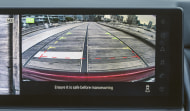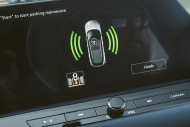
Nissan e-Power explained
You might have seen some news from Nissan about its unexpected approach to the idea of petrol-electric hybrid motoring.
You might have seen some news from Nissan about its unexpected approach to the idea of petrol-electric hybrid motoring.
- EV driving, but no charging needed
- Petrol engine acts as a generator to feed the battery pack
- X-Trail offers all-wheel drive with motors front and rear, while Qashqai remains FWD

The Japanese brand hasn’t gone the way Toyota has, with its series-parallel hybrid systems, and nor has it gone down the same path as Mitsubishi, with its plug-in hybrid EV powertrains.
Instead, Nissan has launched the e-Power series-hybrid system, which - in simple terms - uses the engine under the bonnet as a generator for the car’s electric motors.
Nissan calls it a “100% electric motor-driven system”, meaning that the petrol engine fitted to the car never directly powers the wheels.
The claim that the e-Power system “allows you to enjoy all the benefits of an EV” might not ring true with some who wish to do away with fossil fuel-driven propulsion altogether. But it is undeniable that the technology does offer those who want an EV drive experience the effortless torque and plentiful acceleration, not to mention near-silent driving in some situations, that they might be looking for.
In more detail, Nissan’s e-Power tech uses a lithium-ion battery pack (2.1kWh capacity), connected to an engine/generator unit, which is also connected to the drive unit - comprising an inverter and electric motor.
The electric motor is what drives the wheels. In Qashqai, there’s one electric motor at the front axle, while in the X-Trail there’s a front motor and a rear motor, giving it all-wheel drive (or, in Nissan speak, e-4orce).

As such, you accelerate with the electric motor, and when you brake, regenerative braking captures energy and stores it in the battery. There’s an e-Pedal mode - where you can essentially drive the car using just the accelerator, as the regen braking is strong enough that it can bring the car almost to a complete stop. The braking force is 0.2g, activating the brake lights and slowing rapidly.
On top of the electric motor is the inverter. Its job is to convert DC and AC power, managing the energy flow between the battery and electric motor.
Under the floor of the car is the battery pack, which Nissan calls “lightweight and compact”. The petrol engine - a 1.5-litre, turbocharged three-cylinder unit - acts as a generator to create electricity to feed into the battery pack, which can then drive the electric motor (front, or front and rear).
Of note, the petrol engine can also directly feed power to the electric motor, if it’s required to do so. Nissan says this “eliminates the need for an EV charger”. And that motor is tricky in that it can vary its compression ratio, between 8:1 and 14:1 - the advantage being that in high-demand driving, it’ll use low compression, while high-compression ratios are used in steady driving or when the battery is at a high state of charge.


That’s right - the only thing you fill the car up with is petrol. It requires 95RON premium unleaded, and the tank has a 55-litre capacity in both the X-Trail and Qashqai.
What about fuel economy, then? The official combined cycle fuel use figure for the Nissan X-Trail e-Power e-4ORCE models already on sale in Australia is 6.1 litres per 100 kilometres. And the breakdown of that combined figure is 6.5L/100km for urban, and 5.8L/100km extra-urban.
If you’re wondering how that stacks up against Nissan’s claim that e-Power’s “fuel efficiency is comparable to that of leading conventional hybrids, especially during around-the-town commutes”, it doesn’t quite stack up. An all-wheel drive Toyota RAV4, for example, has a combined cycle fuel consumption figure of 4.8L/100km. The breakdown for that vehicle is 5.0L/100km for urban, and 4.8L/100km for extra-urban.

How is the Nissan system different to the hybrid setup used in Toyota models? The brand synonymous with the word “hybrid” has a design that allows the electric motor and petrol engine to drive the wheels at the same time, or individually. So, you can run on EV power, or petrol power, or a combination of the two.
As for the Qashqai, a small SUV with front-wheel drive, the e-Power version sold in Europe is said to use a combined 5.3L/100km (WLTP). Again, higher than the larger RAV4, and significantly more than the similarly sized Toyota Corolla Cross (hybrid 2WD models: 4.3L/100km).
So, is this technology really worth the extra investment? If you are keen to dip your toes into the world of electrification, it could well be.
It doesn’t require you to rely on recharging from a powerpoint at home, work, or on the road, and that could be the biggest selling point for many Aussie drivers. Instead, it’s just like a regular car - head to the servo, fill up the tank, get an ice cream (you’ve been good - treat yourself!), and hit the road again.
Hang on - isn’t that the exact same reason Toyota’s hybrids are so popular? Maybe Nissan is onto something.
The Nissan Qashqai e-Power is expected to arrive towards the end of 2023. The X-Trail e-Power is on sale now.

More Urban Guide





